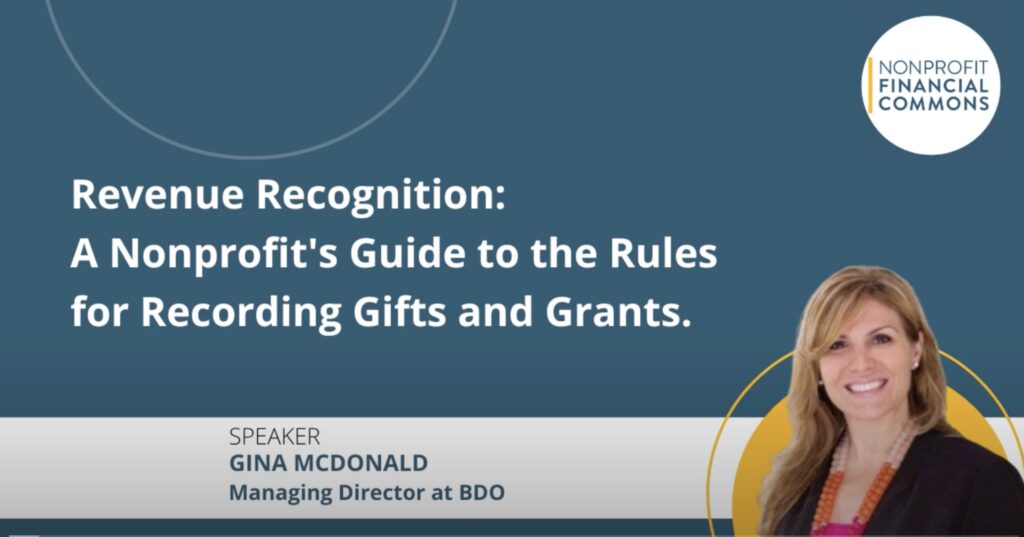Revenue Recognition – Webinar Recording and Resources List

REVENUE RECOGNITION: A Nonprofit’s Guide to the Rules for Receiving Gifts and Grants
Video:
Accompanying Slides: Download here.
Transcript: Download text here.
“FASB Clarifies and Improves Guidance for Not-for-Profit Grant and Contributions Accounting.” July 26, 2018.
The Financial Accounting Standards Board (FASB) issued ASU 2018-08 to clarify the accounting guidance related to contributions made or received. This guidance primarily affects not-for-profit (NFP) entities, although it also applies to businesses to the extent that they make or receive contributions, including grants. The ASU will likely result in more grants and contracts being accounted for as unconditional or conditional contributions rather than exchange transactions compared to current guidance. The new ASU is available here and has various effective dates beginning after June 15, 2018, with specific transition guidance. Early adoption is permitted. Read on….
“Are Grants Subject to Revenue Recognition?” July 21, 2018.
The FASB released a final accounting standards update (ASU), Not-for-Profit Entities (Topic 958): Clarifying the Scope and the Accounting Guidance for Contributions Received and Contributions Made, clarifying a longstanding question for nonprofits. The ASU aims to standardize how grants and other contracts are classified across the sector, as either an exchange transaction or a contribution. Read on.…
“Get revenue recognition right at not-for-profits.” Ken Tysiac. March 2017. Journal of Accountancy.
Not-for-profits face many challenges in recognizing their revenue. One of the primary challenges relates to assessing whether certain not-for-profit revenue transactions are actually contributions or exchange transactions. Furthermore, when evaluating transactions that meet the definition of a contribution, there may be a variety of other considerations including whether a contribution is conditional, an agency transaction, or a promise to give, and if it is a promise to give, whether the promise is legally enforceable. These judgments often drive the decision on whether to record revenue at a point in time or over time. Confusion over these challenges may be compounded by the fact that not-for-profits are implementing FASB’s new revenue recognition standard as well as a new FASB standard on not-for-profit financial reporting. Nonetheless, following best practices can help not-for-profit preparers and their auditors avoid common mistakes. Read on.…

